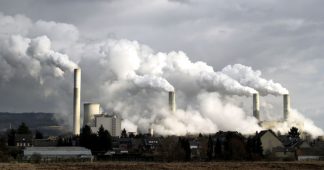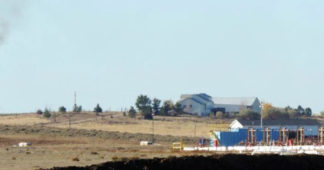By Omayma Sheikh
Jun 10, 2024
This was confirmed by a new study by British and US experts, which indicates that this figure increases dramatically if pre- and post-war construction activities are considered, reaching between 47,669,97 and 61,443,739 tCO2e.
On Monday, official sources stated that the Israeli aggression against the Gaza Strip also causes high emissions of polluting gases and during the first 120 days of the conflict alone, the levels of these toxic substances concentrated to date exceeded those of 26 individual countries.
Since the start of the conflict on 7 October 2023, more than 35,000 Palestinians and 1,139 Israelis have been killed, and more than 100 Israelis and foreigners are still being held hostage by Hamas.
Added to this is the significant environmental impact of this armed conflict, which has already caused total emissions from direct warfare activities of between 420,265 and 652,552 tonnes of carbon dioxide equivalent (tCO2e).
This was confirmed by a new study by British and US experts, which indicates that this figure increases dramatically if pre- and post-war construction activities are considered, reaching between 47,669,97 and 61,443,739 tCO2e.
“The environmental impact of the conflict is significant and deserves attention. Military operations, according to a previous study, are responsible for about 5.5 per cent of global carbon emissions,” said one of the authors of the study, Benjamin Neimark, a senior lecturer at Queen Mary University of London.
MoH: 11,000 cancer patients in #Gaza without any kind of treatment!
MoH: 1.2 people in #Gaza suffering from infectious diseases due to malnutrition and pollution!#StopGazaGenocide pic.twitter.com/5WcLIflu3n
— Motasem A Dalloul (@AbujomaaGaza) June 8, 2024
He said the study highlights the need for comprehensive reporting of military emissions to the United Nations Framework Convention on Climate Change (UNFCCC) and for greater awareness of the climate impact of conflict.
Co-author Patrick Bigger, research director of the US-based Climate and Community Project, said that carbon emissions associated with the Israeli invasion of Gaza are not the most important reason why the global community should push for a ceasefire.
However, “this research demonstrates some of the long-term social and environmental impacts of war, and serves as a reminder that armed conflict brings us closer to the precipice of catastrophic warming”.
The research estimated carbon emissions from the Israel-Gaza conflict over three distinct periods: pre-conflict preparatory construction activities, emissions from the first 120 days of active warfare (October 2023 to February 2024) and projected emissions from future reconstruction efforts.
According to this finding, pollution from the construction and fortification of war infrastructure by Israel and Hamas, such as the network of tunnels and Israel’s protective “iron wall”, exceeds that of more than 36 individual countries.
On the other hand, it estimates that the emissions associated with the reconstruction of Gaza are greater than those of more than 135 countries in a single year.
The upper estimate of emissions from upstream, wartime and post-war activities is comparable to the burning of 31,000 kilotonnes of coal, enough to fuel some 15.8 coal-fired power plants for a year, the enquiry concludes.
We remind our readers that publication of articles on our site does not mean that we agree with what is written. Our policy is to publish anything which we consider of interest, so as to assist our readers in forming their opinions. Sometimes we even publish articles with which we totally disagree, since we believe it is important for our readers to be informed on as wide a spectrum of views as possible.











